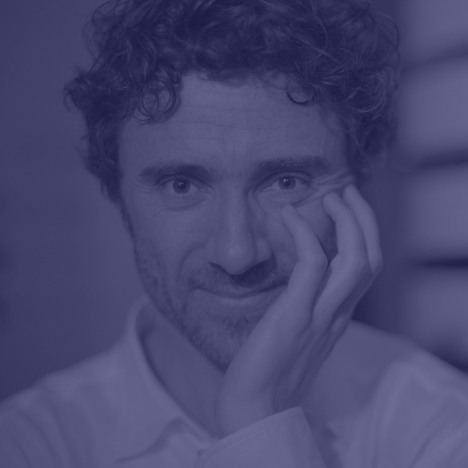
Thomas Heatherwick: "We don’t work in two dimensions"

Dezeen Book of Interviews: in the next extract from our latest book, British designer Thomas Heatherwick discusses some of his studio's most high-profile projects including the UK Pavilion for Shanghai Expo 2010 and updating London's iconic red buses.
From the 2012 Olympic Cauldron to the proposed £175m Garden Bridge that will stretch across the River Thames, Heathwick's portfolio includes a wide variety of high-profile projects at many different scales.
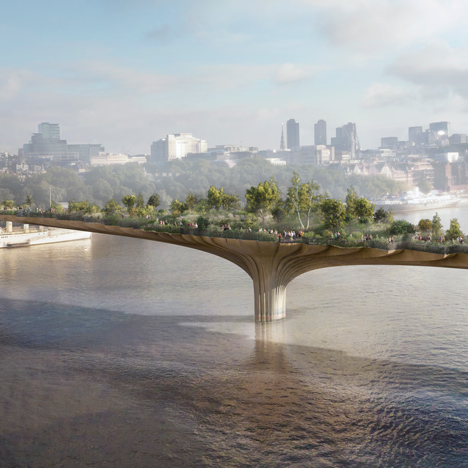
When Dezeen's editor-in-chief Marcus Fairs spoke to Heatherwick at his Designing The Extraordinary retrospective at London's V&A Museum back in 2012, the designer claimed that he approaches all projects in the same way.
"I've never seen these as different disciplines. I see this collection as one discipline that is designing in three dimensions," he said. "In general, we don't work in two dimensions. We're not flat."
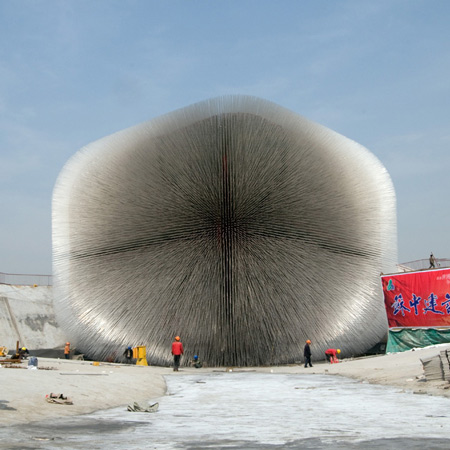
In 2010 Heatherwick gained international acclaim for designing the UK pavilion at Shanghai Expo 2010. Called Seed Cathedral, the pavilion featured 60,000 fibre-optic rods that each contained plant seeds at the tip.
"We had half the estimated budget of the other Western nations," he said. "We were told, 'You've got to be in the top five.' That was the most useful bit of the brief."
"We tried to focus on not being a cheesy advert for Britain: umbrellas and bowler hats, the Queen, David Beckham," he explained. "So we thought we'd show something that Britain has never seen either. If we could just say one thing, with our little half-budget, we could really stand out."
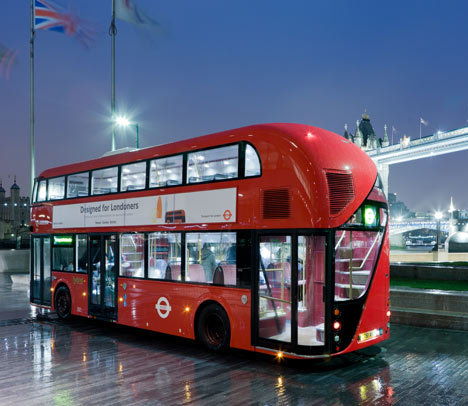
Back in his native England, Heatherwick is perhaps best known for the 2012 Olympic Cauldron and for reimagining London's famous red Routemaster buses, which hadn't been redesigned for nearly 50 years.
"If you come to London, the quantity of elevation of an art gallery or a library can't compare to the quantity of elevation of a double-decker bus," he said.
"Buses are a main part of the architectural experience in London," he added. "The particularity and expression of the values of cities don't just have to manifest in the art galleries. They manifest in the infrastructure."
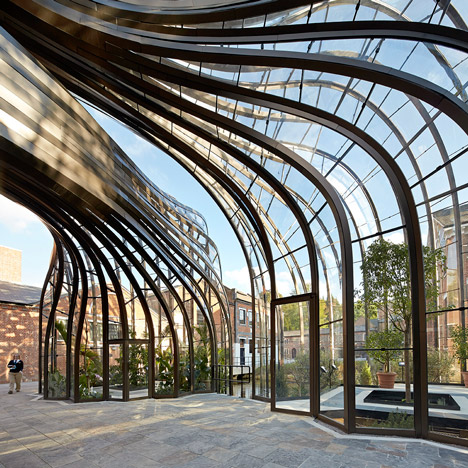
The Designing The Extraordinary show at London's V&A Museum, curated by Abraham Thomas, was the first comprehensive display of projects by Heatherwick Studio in the 18 years it had been running.
"We've got a space we call an archive, but when Abraham put all the objects he wanted on the table, we were looking at it and it felt like junk. 'Are you serious? Is that going to be in the Victoria and Albert Museum?'," he said. "But it's amazing what a display case can do to something."
Dezeen Book of Interviews: Thomas Heatherwick features in our new book, which is on sale now
Marcus Fairs: Tell us a bit about your new exhibition. What does it include?
Thomas Heatherwick: We've worked with a curator, Abraham Thomas. My studio hasn't chosen what's here. One of the things the V&A said right at the beginning was that architects and designers, when they curate their own shows, they're always too indulgent, somehow. So there was a need to have an objective person in that role.
We've never had a show of our work. The studio has been going for 18 years. We've got a space we call an archive, but when Abraham put all the objects he wanted on the table, we were looking at it and it felt like junk. "Are you serious? Is that going to be in the Victoria and Albert Museum?" But it's amazing what a display case can do to something. It's got this mix of being a lot about the process, so there are things I did when I was at the Royal College of Art for my graduation. There are three times as many objects here than they've ever had in this gallery, so it's all crammed in. I think the curator became interested in the workshop side of things – not just the shiny outcomes, but how we got there.
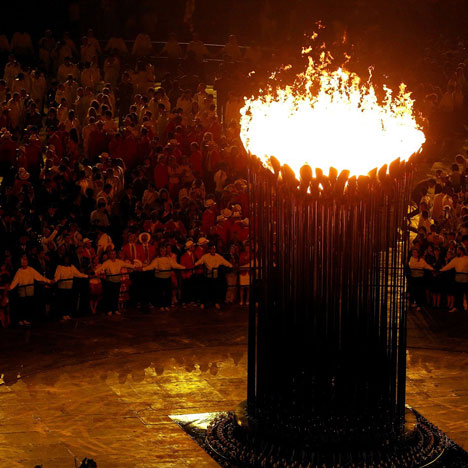
Marcus Fairs: You've designed the cauldron that will hold the flame at the London 2012 Olympics, but it's not in the exhibition.
Thomas Heatherwick: It's the most top-secret thing we've ever worked on.
Marcus Fairs: So what can you tell us about that right now?
Thomas Heatherwick: Obviously I can't tell you anything about that. But the thing is, it's not just a thing: it's a moment. It's the most public moment you can possibly do. Danny Boyle is a "moment" designer. It's been interesting trying to think of that dimension in our collaboration with him. And London's Games, after the phenomenal thing that was Beijing, what does London have? Ideas. The British government has said yes to an idea we think is quite exciting.
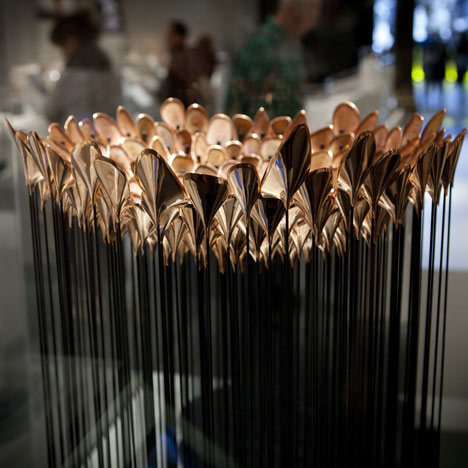
Marcus Fairs: And that will be revealed on...?
Thomas Heatherwick: It will be wheeled in here on 27 July, which is the night of the opening ceremony.
Marcus Fairs: How do you approach projects? Is there a unifying thread to the objects and the projects in this room?
Thomas Heatherwick: Ever since I was little, I've been interested in ideas, so I hope that's what links together this collection of projects. I've never seen these as different disciplines. I see this collection as one discipline that is designing in three dimensions. In general, we don't work in two dimensions. We're not flat.
The interest is in the world that surrounds us and why things exist – like getting a chance to work on, say, the new London bus. Everyone's become very obsessed with buildings, the power of one or two special buildings in a city. And yet if you come to London, the quantity of elevation of an art gallery or a library can't compare to the quantity of elevation of a double-decker bus. Buses are a main part of the architectural experience in London. The particularity and expression of the values of cities don't just have to manifest in the art galleries. They manifest in the infrastructure. And in fact I believe it's more interesting to focus on improving infrastructure.

Marcus Fairs: Part of one of the new double-decker buses you've designed is here in the exhibition.
Thomas Heatherwick: The last time a design team was allowed to work on London's buses was 50 years ago. London's famous for its red buses and yet, in my opinion, the experience has been degraded as different health and safety laws and regulations have come in. The only requirements London's transport authority has had for so long have been: double decker, make it red. Other than that, different operators, because they're not owned by London's transport authority, have been able to say: all the fabric is purple with yellow spots. Okay, you want a chiller? Just put that big lump of chiller above the stairs, blocking everyone's view with a mysterious lump. Our job is to bring together all those European directives and best-practice issues and make it not feel that it's a collection of compromises.
The key aspects of the brief were to make a bus that uses 40 percent less energy than the diesel buses you see and also to improve the reliability. That romantic notion of a bus that people love and think of in London has one door, and that means you're waiting for all the passengers to unload before the passengers waiting at the stop can load up. If there are a lot of people, that can take a long time. That means the timetable will be very unreliable. So having three doors and two staircases means you can load and unload much faster, and it means the bus is more likely to meet its schedule.
Also, the bus that people are romantic about when they think about London, you can't get a wheelchair on it, or the modern baby buggies. There are different needs now, 50 years later, and we're trying to manifest them in a bus.
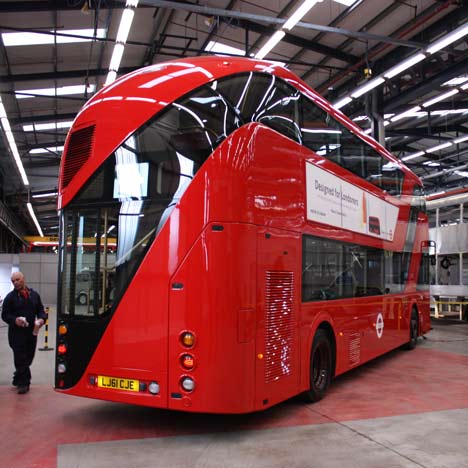
The back of the bus is like the end of a loaf of bread. The reason for rounding it was to try and reduce the perceived brickiness. The effect is reminiscent of the original London Routemasters. The bus itself is three metres longer than the old Routemaster. It's huge.
The intention wasn't to remake something from the past; we've not tried to reinvent ideas that don't need reinventing. One of the most basic examples of that was the bus seat. At the moment, you get into a bus and your eye is bombarded by all these plastic buckets. Each one has a handle and a crevice that a crisp packet can get caught in. We've reintroduced a bench seat that is just one element, one handrail across the back, so your eye is calm when you're in that environment.
Using darker colours on the lower part and lighter colours on top is a funny thing. We had to make the bus look good dirty because the bus is cleaned only once a day. On a slushy winter's day when 70 school kids get on, the floor is going to get slushy and sandy and the seats might have a bit of kebab or whatever on them. So we developed distortion patterns. We designed a repeat that was the size of the body and the distortion pattern is the same shape as your body, a bit like contours.
The bigger thing is that the bus has two staircases. And what the Mayor of London really wanted was an open platform. You're not a prisoner in the bus when it's three metres from your stop. You can get on and off. The meanest bit about the old staircases was going up through a solid plastic tube. It just seemed a basic thing that you could get a view of London as you circulate. So here, there's this staircase that sweeps around and the glass sweeps around the back. At the front it's the same. The daylight pulls you through.
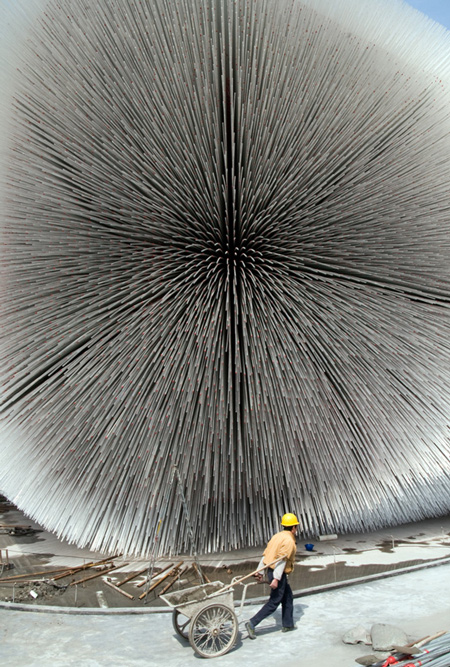
Marcus Fairs: One of your best-known projects is the 'hairy' UK pavilion from the Shanghai Expo 2010.
Thomas Heatherwick: In Shanghai we won the competition to represent, or somehow communicate, Britain at the world's largest Expo. We had half the estimated budget of the other Western nations. There were going to be 250 pavilions there, more than you could see even if you spent four months there. But we were told, "You've got to be in the top five." That was in the British government's brief. That was the most useful bit of the brief. We had no context to work with because all the other pavilion designers around the world were thinking about the same thing at the same time. So we had to try and second guess what the trend might be.
We tried to focus on not being a cheesy advert for Britain: umbrellas and bowler hats, the Queen, David Beckham. I just thought, "Well, what might have more meaning?" So we thought we'd show something that Britain has never seen either. It came back to saying one thing. And if we could just say one thing, with our little half-budget, we could really stand out.
Everyone had a site the size of a football pitch. If we'd spent our budget making a football pitch-sized building, we wouldn't have had any money left for content. So we only used a sixth of the site, and within the surrounding public space we had all the government meeting spaces and broom cupboards and staff training rooms and toilets. By making it only a sixth of the site, you suddenly get the perception of proportion. This "seed cathedral" was the outcome of that thinking.
The Expo was about the future of cities. And what came up in our research was that London, for its sheer size, is the greenest city in the world, with public parks, gardens, squares and the world's first botanical institution, Kew Gardens. The seed bank that Kew has set up, near Gatwick airport, is an incredible project that few people have ever seen, but some of the seeds are beautiful. We went to see the head of the seed bank and they agreed to give us a quarter of a million seeds. The whole project depended on that.
The space is made from 66,000 fibre-optic rods. You could say each is a vitrine or a window. Each fibre-optic rod is embedded with a sample of seeds at the tip. The building is a box punched with 66,000 holes for these fibre-optic rods and seeds and then waterproofed. The building moved in the wind and it's the only project we've done that looks more like a render than the render.
The surrounding space did a couple of jobs. People were exhausted from walking around the Expo, so it gave them the chance to sit down on a piece of landscape that wasn't just flat, that brought people together. We developed, with an artificial grass manufacturer, a micro version of the pavilion surface. It was silvery and soft and because it was soft, it absorbed sound, so there was this underlying silence. It was just like when it snows.

Marcus Fairs: Do you think of yourself as a British designer? In your book you mention your engineering heritage, from your grandfather, and your influences. Is there a notion of Britishness that you express, or is it just by chance that you're working in London?
Thomas Heatherwick: As a country that was the first to industrialise, that has such a cultural accumulation, I feel like I was very lucky I was brought up in London. I haven't had to think where I should be in the world. It's had a gravitational pull and I think that it's loose and scraggy enough as a city that it makes people feel comfortable to be here – as well as having these incredible institutions like the V&A. I do find it amazing that you can get on a bicycle and in 25 minutes be at the front door of some of the most talented people in the world. Those aren't necessarily people who were born in Britain but people who have chosen to base themselves here. Designing the pavilion in Shanghai, I felt a kind of duty to represent the phenomenal people and imagination based in Britain. If the pavilion had turned into a cliché, it would really not be reflecting a true picture.
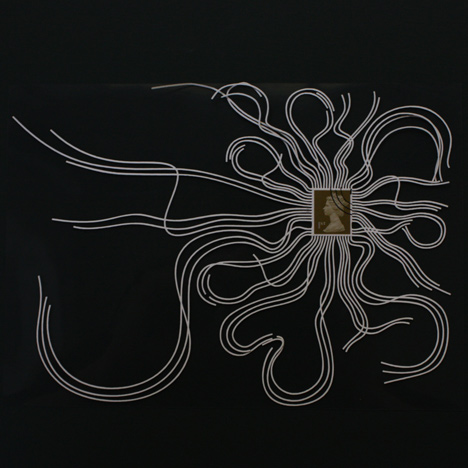
Marcus Fairs: Can you tell us about your Christmas cards, because I think this is the thing I love the most, especially when I get one. Tell us about the dilemma of sending Christmas cards as a designer.
Thomas Heatherwick: When I was little, my family made cards for one another. Nobody bought a pack from WHSmith, which already had the message written in, where you just put "Dear John" or "Dear Bob". It got a bit out of hand and carried on into adult life. I set up the studio 18 years ago, and you need a lot of help to begin with, whether that's people giving you advice or showing you how to do things, or lending you things. When trying to say thank you, I didn't have any money to give anyone the obvious thing, like a bottle of whisky. What I did have was the ability to give an idea. I'm sure many people would rather have had a bottle of whisky, but it felt like the thing you could give that was more unique. So for 17 years we did our own cards. Our first-ever Christmas card is in the V&A's collection.

Marcus Fairs: What's that card like?
Thomas Heatherwick: The card was looking at what's the least you could possibly send someone. Well, you've got to send the stamp. So here the person's address is written on the back of the stamp, and there's a little greeting on there. It's trapped in a block of acrylic, a bit like ice, but we imagined it getting pushed through the letterbox, and the dog going to get the letters and choking on this thing.
I got interested in the process of posting because a key part is it's not about spending money. It was expending the effort on something. We made friends with the big sorting office near our studio in King's Cross, with a man who runs the special hand-stamp centre, and each year they'd work with us to make that card happen. So the stamp on this one is floating in the block and even the postmark is floating. In a way it was part of the festiveness within the studio, making the cards. Sometimes it was as hard as designing a building. It was a very tight project because it can't weigh a certain amount or you'll have to pay for first-class stamps, and you'd rather pay for second-class stamps. It was a tight little piece of product design.